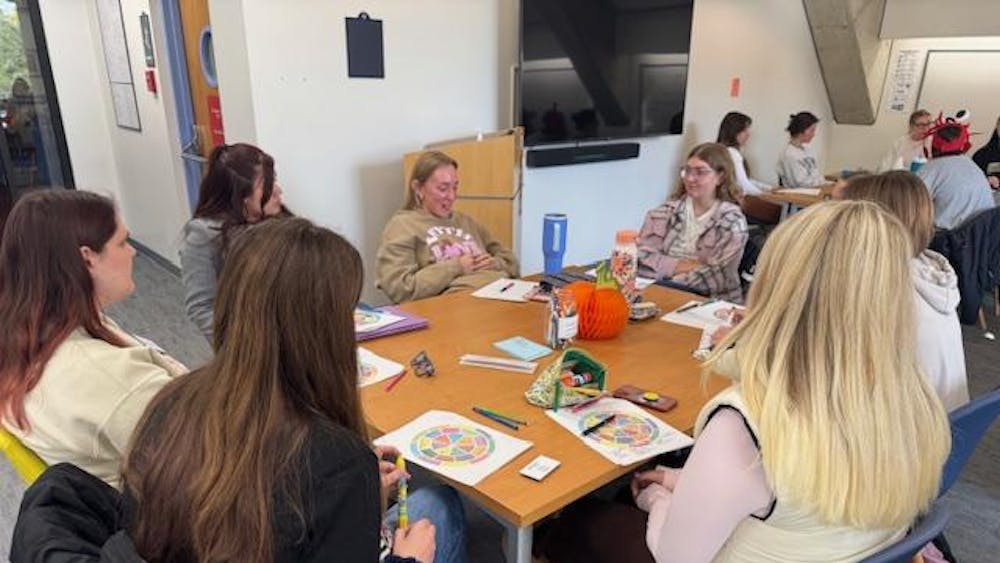https://soundcloud.com/user-389926193/art-historian-explains-history-of-grotto-fountain
While approaching the Grotto, several things might catch your eye: the imposing rocks, the hundreds of white candles or a trickling fountain on the left.
This fountain may not be the most iconic part of the Grotto, but it has its own stories from seven decades of keeping watch over visitors.
The fountain was made in 1943 by William Schickel, who completed the project as a thesis for his Bachelor of Fine Arts degree at Notre Dame.
The original fountain was built using concrete, stone and terrazzo, but was remade in bronze this summer during a period of general renovations for the Grotto site.
The fountain’s name is uncertain, though some people call it the “Trinity Fountain,” or “Living Waters.”
Fr. Austin Collins, a professor in the Department of Art, Art History, and Design, does not call the fountain “Living Waters,” but is more inclined to agree with that imagery.
“The images of water; the washing of the feet, the calming of the storm, the woman at the well, are just images of water and making a fountain,” he said, referring to the three artistic representations on the sides of the work.
Regardless of the name, Collins says the fountain and the Grotto around it hold a special place in the hearts of all who visit.
“It’s really been a place of pilgrimage,” he said. “Whether you’re Catholic, or whether you’re Christian, or not, you see people down there. It’s a sacred, holy place.”
A letter written by Dr. Tom Dooley, an alumnus who cared for ill, impoverished children in Asia, defends Collins’s characterization. The letter, written while the author was gravely ill in Asia, is memorialized in a plaque on the site. It reads in part:
“How I long for the Grotto … especially now when there must be snow everywhere and the lake is ice glass and that triangular fountain on the left is frozen solid. … Knowing prayers from here are just as good as from the Grotto doesn’t lessen my gnawing, yearning passion to be there.”
Read More
Trending









